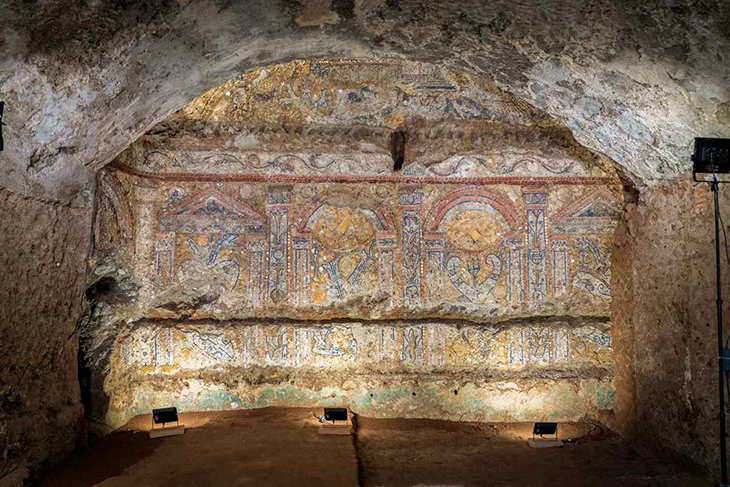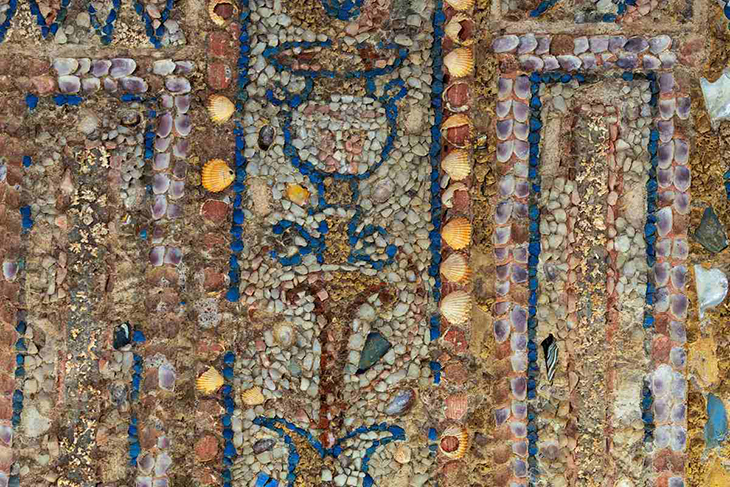
Excavations on the illustrious Palatine Hill in Rome have unearthed a remarkable banquet hall belonging to a wealthy aristocrat. What sets this discovery apart is the breathtaking mosaic adorning its wall, crafted almost entirely from materials sourced from the sea.
This mosaic, measuring a staggering 16 feet in length and estimated to be around 2,300 years old, is a testament to the craftsmanship and artistic prowess of ancient Rome. Composed of an array of materials including seashells, coral, mother of pearl, blue glazed tiles from Egypt, specks of marble, and Roman glass, the mosaic portrays a vivid scene of maritime life.
Sailors, ships, mythical sea creatures, trumpets, and tridents come together to form a captivating narrative, likely commemorating a victorious naval battle significant to the owner of the banquet hall.
According to archaeologist, Alfonsina Russo, who also heads the Colosseum Archaeological Park in charge of the site, “In ancient times, when powerful noble families inhabited the Palatine Hill, it was customary to use rich decorative elements as a symbol to show off opulence and high social rank.”
She also mentioned in her interview with CNN that beyond its artistic significant, the banquet hall itself was a marvel of luxury and entertainment. Overlooking a garden, the hall was equipped with intricate water features where lead pipes conveyed water to statues and fountains, creating captivating “water games” for the enjoyment of the affluent aristocrats.

The preservation of this ancient mosaic is nothing short of remarkable.
Professor of Roman antiquities and head of the mosaic lab at Rome’s Università degli Studi di Roma, Marco Rossi, said, “Mosaics are usually found on floors, but this runs across the entire front wall and has been incredibly well-preserved. It’s not been ruined by the weight of debris—as can happen to some mosaics on the ground.”
Experts attribute its remarkable condition to the unique circumstances of its burial. Situated on the Palatine Hill, the mosaic was eventually buried under layers of mud and soil as the landscape shifted over time, effectively protecting it from the deteriorating effects of oxygen exposure.
However, amidst the excitement of this discovery, one crucial piece of the puzzle remains elusive: the identity of the individual who commissioned and financed the construction of such an opulent display of wealth and artistry.
While archaeologists continue their search for clues regarding the patron behind this extraordinary banquet hall, the public will soon have the opportunity to marvel at its splendor. Scheduled to open to visitors in late January, the banquet hall promises to offer an unparalleled glimpse into the lavish lifestyle of ancient Roman elites.
What are your thoughts? Please comment below and share this news!
True Activist / Report a typo


